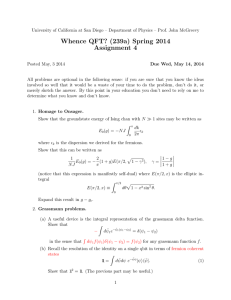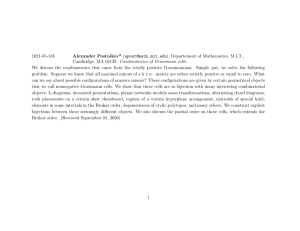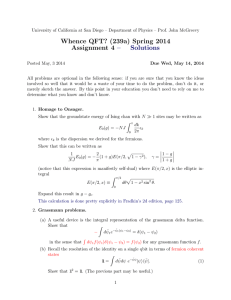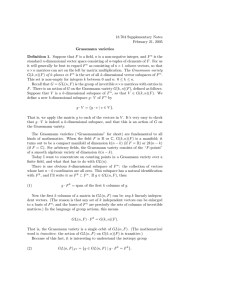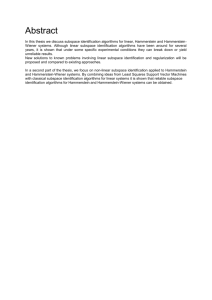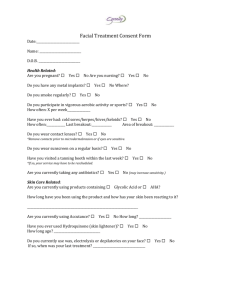Grassmannian Learning for Facial Expression Recognition from Video
advertisement
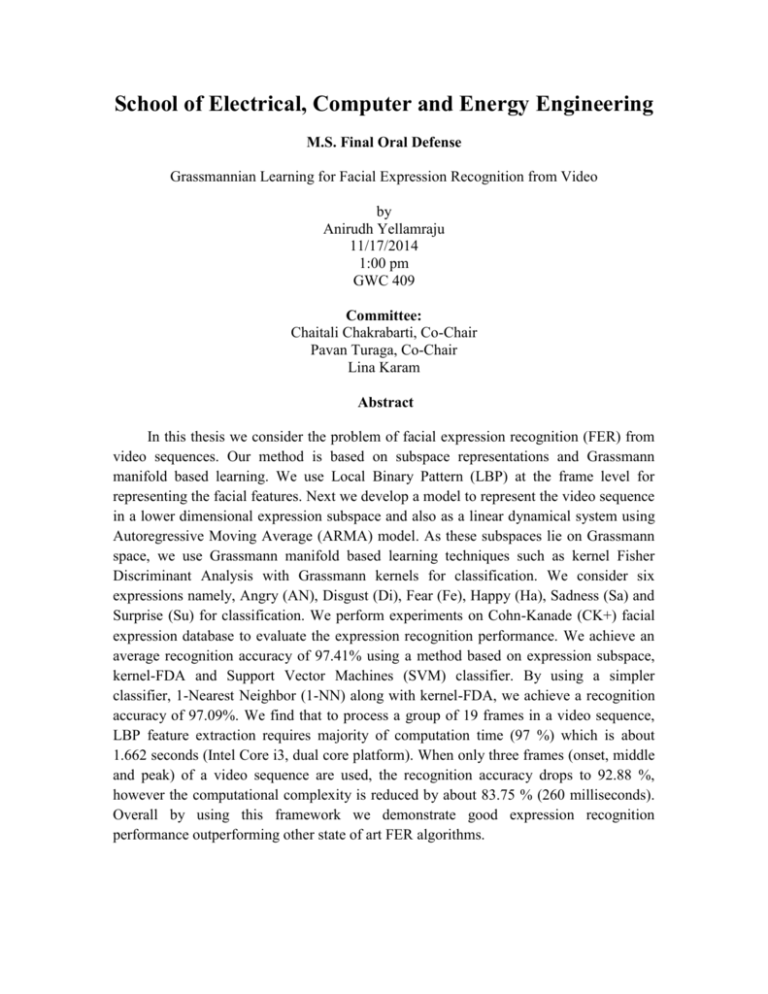
School of Electrical, Computer and Energy Engineering M.S. Final Oral Defense Grassmannian Learning for Facial Expression Recognition from Video by Anirudh Yellamraju 11/17/2014 1:00 pm GWC 409 Committee: Chaitali Chakrabarti, Co-Chair Pavan Turaga, Co-Chair Lina Karam Abstract In this thesis we consider the problem of facial expression recognition (FER) from video sequences. Our method is based on subspace representations and Grassmann manifold based learning. We use Local Binary Pattern (LBP) at the frame level for representing the facial features. Next we develop a model to represent the video sequence in a lower dimensional expression subspace and also as a linear dynamical system using Autoregressive Moving Average (ARMA) model. As these subspaces lie on Grassmann space, we use Grassmann manifold based learning techniques such as kernel Fisher Discriminant Analysis with Grassmann kernels for classification. We consider six expressions namely, Angry (AN), Disgust (Di), Fear (Fe), Happy (Ha), Sadness (Sa) and Surprise (Su) for classification. We perform experiments on Cohn-Kanade (CK+) facial expression database to evaluate the expression recognition performance. We achieve an average recognition accuracy of 97.41% using a method based on expression subspace, kernel-FDA and Support Vector Machines (SVM) classifier. By using a simpler classifier, 1-Nearest Neighbor (1-NN) along with kernel-FDA, we achieve a recognition accuracy of 97.09%. We find that to process a group of 19 frames in a video sequence, LBP feature extraction requires majority of computation time (97 %) which is about 1.662 seconds (Intel Core i3, dual core platform). When only three frames (onset, middle and peak) of a video sequence are used, the recognition accuracy drops to 92.88 %, however the computational complexity is reduced by about 83.75 % (260 milliseconds). Overall by using this framework we demonstrate good expression recognition performance outperforming other state of art FER algorithms.
